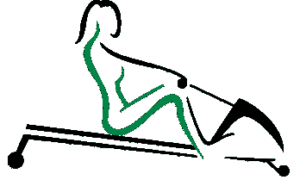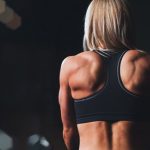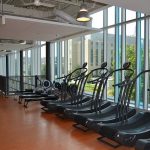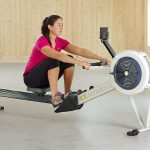Contents
When you buy through links on our website, we may earn a small commission at no cost to you. Thanks for your support 🙂
Many people want to know what muscles the rower targets to see if it is a good workout or if they would be better off with another piece of cardio equipment.
You’ll be pleased to find that the rower is one of the best full-body exercise equipment options available and that it outperforms many other exercise machines, such as the elliptical and treadmill, in a variety of ways.
Different muscle groups are used depending on the stage of the rowing motion: the catch, drive, finish, or recovery phase. Almost every muscle in your body has been hit by the time you have completed a full rowing stroke.
What muscles are engaged during the four rowing phases?
To fully comprehend which muscle groups a rowing machine works, it is essential to keep in mind that the rowing stroke is divided into four distinct phases. The body is in a completely different position at each stage, so different muscles are being used at each stage.
Let’s break down the specific muscles being targeted as well as a description of each phase.
Stage 1: The Catch
Basically, this is where you start when beginning your workout. Your hands are firmly grasping the handles, and they are fully stretched. Moreover, your knees are fully bent toward your chest.
Stage 2: The Drive
This is the main force of the rowing workout, where you push against the pedals and propel yourself back while extending your legs. You are also establishing a 90° angle with the rail by drawing your arms toward your chest.
Stage 3: The Finish
Towards the end of the drive phase, you have pulled your arms against your abdomen and have gone beyond the 90° angle.
Stage 4: The Recovery
You now slide forward on the rower while bending your legs and extending your arms before returning to the first stage (catch position). The process starts again from scratch.
Try Sunny Health & Fitness Squat Trainer for even more muscle-toning and calorie-burning potential!
1. Muscles worked during the catch phase
If you are rowing a boat, the catch phase is when the oar blades are placed in the water.
On the rower, the beginning of the rowing stroke is known as the “catch.” Your knees are bent, your arms are straight, your shins are in a vertical position, and your body is leaning forward. This is considered the most important phase of rowing.
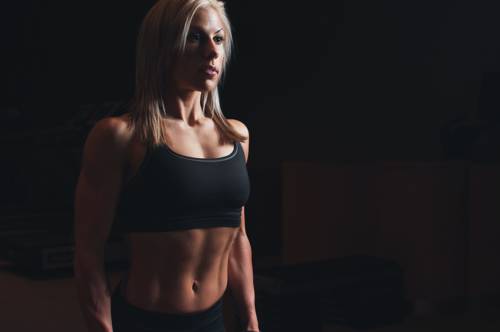 Muscles engaged during the catch phase include:
Muscles engaged during the catch phase include:
- Calves
- Triceps
- Lower back
- Abdominals
- Hamstrings
- Trapezius
- Deltoids
2. Muscles worked during the drive phase
The phase that mimics pushing the oars out of the water and moving the boat forward is called the “drive.” You push off with both your feet during the drive until your legs are fully extended. Then, you’ll use your hip hinge and core to push your body into an almost upright position while leaning slightly forward. Finally, as you push through, you move your upper body as you start to lean back.
This should be done in a continuous, smooth motion.
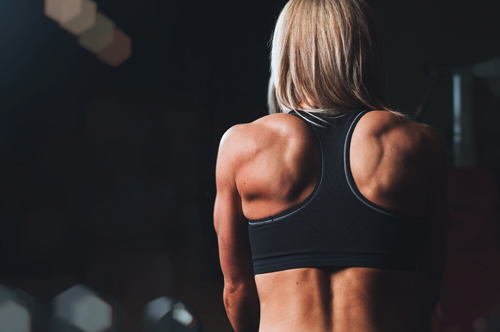 Muscles used during the “drive” phase include:
Muscles used during the “drive” phase include:
- Hamstrings
- Calves
- Glutes
- Deltoids
- Biceps
- Upper back
- Trapezius
- Quadriceps
- Abdominals
- Forearms
- Middle back
- Latissimus dorsi
3. Muscles targeted during the finish phase
The last phase of the rowing stroke is called the “finish.” At this point, your upper body is leaning back slightly, and your legs are stretched almost fully. Moreover, you pull the handlebar toward your sternum/lower chest using your shoulders, arms, and back.
Muscles engaged during the finish phase include:
- Forearms
- Deltoids
- Latissimus dorsi
- Glutes
- Biceps
- Trapezius
- Quadriceps
4. Muscles targeted during the recovery phase
The “recovery”, is virtually the first 3 stages reversed. Your arms should be extended out in front of you while remaining parallel to the ground. You should also hinge forward from the hips while bending your knees and using your hamstrings to pull your body forward. Continue until you are back in the original “catch” phase.
Muscles targeted during the recovery phase include:
- Abdominals
- Trapezius
- Calves
- Forearms
- Hamstrings
- Deltoids
- Triceps
To target the correct muscle groups and avoid injury, you must maintain the correct rowing posture and technique.
Common rowing workout mistakes
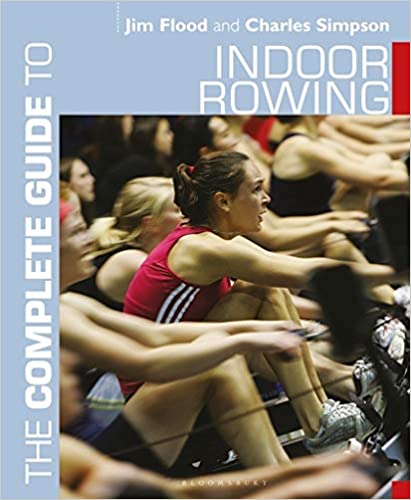 Poor technique causes excessive muscle strain, which increases your chance of injury.
Poor technique causes excessive muscle strain, which increases your chance of injury.
By avoiding these typical rowing errors, you can safeguard your muscles and prevent injuries.
1. Driving using your biceps rather than your lats and quads
Your stroke should be powered by your back muscles and legs rather than your biceps.
The stronger, bigger muscle groups are those in your back and legs. You aren’t utilizing your maximum stroke capability when you exclude these larger muscles from the rowing action. As a result, you may build less muscle.
Keep in mind that using your biceps during the drive phase increases the risk of injury.
As you drive, keep your arms extended. Push with your feet only, without bending your arms, until you feel your hips start to hinge and you begin to pull your torso backward.
2. Moving too fast on the slide
Rowing requires control.
Your speed usually increases as you drive to the finish from the catch phase. You should allow twice as much time for recovering as for driving. This allows for a full rowing stroke and better muscle activation.
3. Arching your back as you recover
Leaning forward is common as you get exhausted.
Slouching during the recovery stage can prevent you from activating your lats because it causes your chest to drop forward. Moreover, it puts you at risk for potential injuries and low back pain.
Most Popular Rowers 2023
| PRODUCT PREVIEW | NAME | CHECK PRICES |
|---|---|---|
| PRODUCT PREVIEW | NAME | CHECK PRICES |
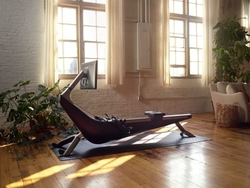 | HYDROW Luxurious Rower | |
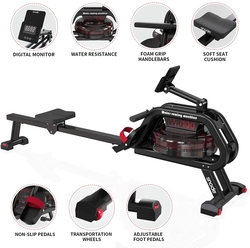 | SNODE Water Rowing Machine | |
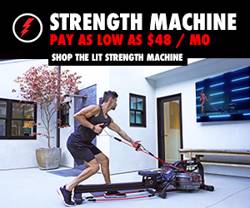 | LIT Strength Machine | |
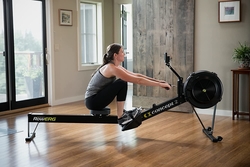 | CONCEPT 2 Rowing Machine |
The bottom line
The Centers for Disease Control and Prevention (CDC) recommends engaging in at least 150 minutes of moderate aerobic activity per week, 75 minutes of intense aerobic activity per week, or an equivalent combination of the two in order to maintain good health. You can achieve this health goal using a rowing machine.
The rowing machine is a great alternative for anyone with conditions such as arthritis or delicate joints because it is a low-impact exercise, unlike other aerobic exercises like running.
